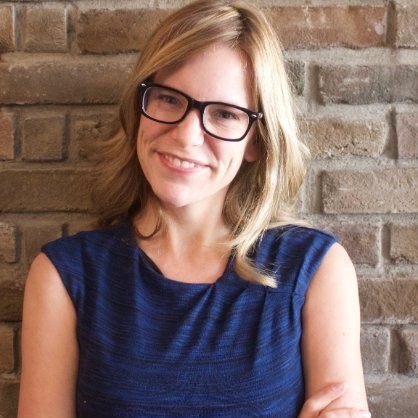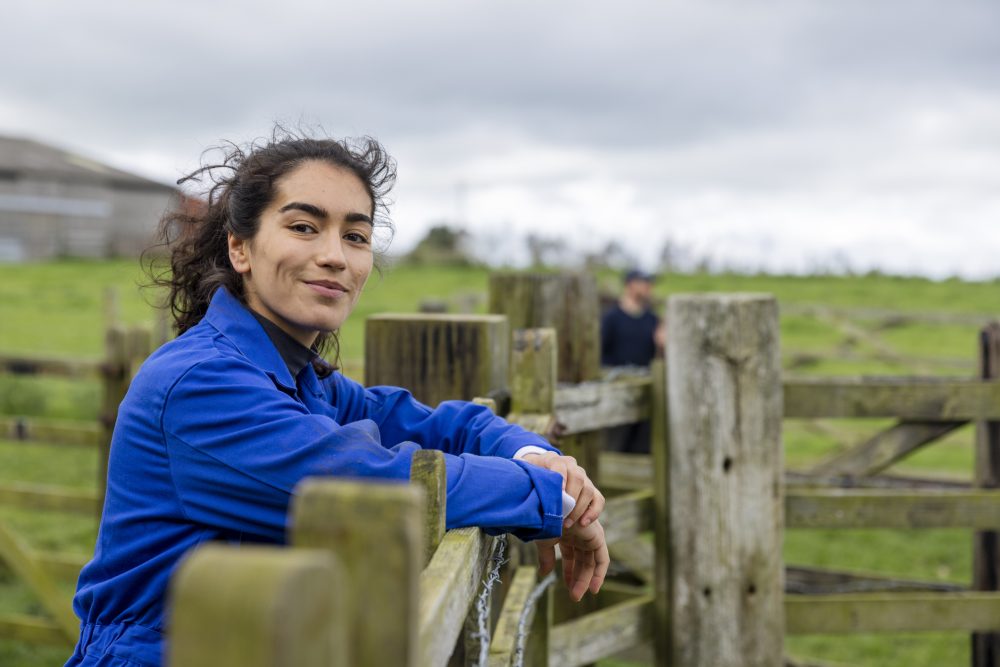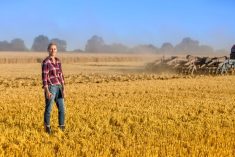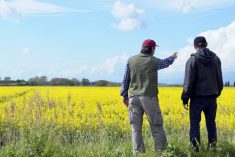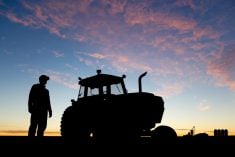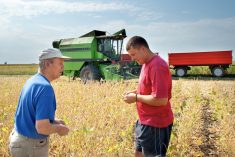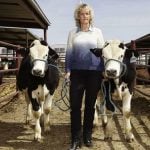Canadian farmers are no strangers to change. Over the centuries, and especially over the last few decades, they have constantly adapted to changing global markets and government policies with new processes, technology and on-farm practices.
Despite change being such a big part of farming, however, few farmers receive formal lessons in best practices for change management. Instead, many learn on the job. Most excel at it — but there are times when change fails.
There are many reasons why change efforts fail, but the most common are rushed decisions, or decisions that aren’t strategically made or that aren’t implemented properly.
Read Also
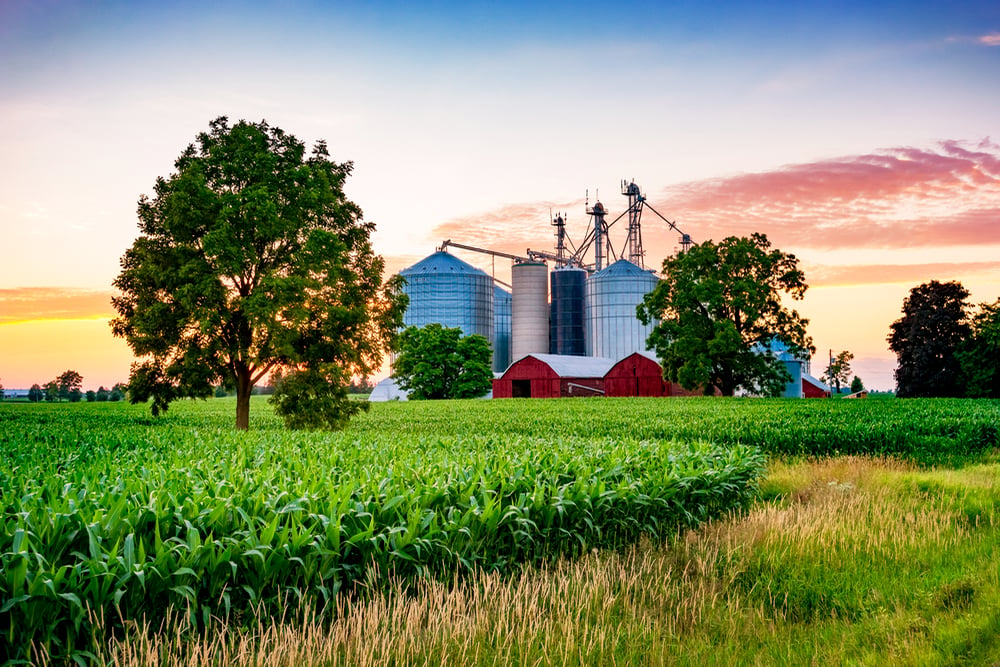
The wildly adaptable side of next gen agriculture
Some people just fall into the world of agriculture — and consider themselves lucky to have stumbled into such a…
These mistakes cost farmers precious time, resources and even human capital.
What does effective change look like? How can we learn from our failed change efforts and from each other to better manage change?
Is the change productive?
Agronomist Larry Durand says the first question to ask yourself when considering a change in your operations is simple: do we need this change and what will be the impact?
Over his 25-year career working with farmers in and around Humboldt, Sask., Durand has seen many changes in Canadian farming practices, such as the adoption of zero-till and precision agriculture, the mechanization of farm processes, and the rapid adoption of new technology and data collection.
Farmers come to him for change management support when adopting new products and technology and he always advises them to first do some research.
“There are a lot of technologies out there that I personally feel offer a low likelihood of providing an economic benefit,” says Durand. He advises farmers to perform due diligence on any new product or practice before moving ahead with a decision. This should include gathering input from their networks of retailers, accountants, agronomists and especially other farmers. “There are a lot of farmers out there who are very willing to share their advice. The best forum is other farmers you trust.”
Durand says farmers should also be aware that there are many products that do not have adequate science and proven results behind them.
“There are a lot of sales pitches out there,” he says. “I think it’s important to really look at any new product critically. Is this product really legitimate? Is it real or is it snake oil?”
He believes North American farmers are extremely adept at learning and adopting new technology, but he also advises farmers to consider their own abilities and preferences before making any big changes.
“Not everybody needs to be an innovator or an early adopter. In fact, in a lot of cases, it’s probably best for a lot of farmers to stand back and let the really innovative producers figure out the new technology,” he says, adding that the learning process itself can cost farmers significant amounts of time and money.
Finally, he advises farmers to ask if the scope of any prospective change is right. Sometimes making smaller, simpler changes can be just as effective.
He has helped many farms initiate “low hanging fruit” changes, the type of change that is relatively simple to adopt but which yields big effects. For example, identifying saline areas in fields that could be seeded to grass instead of used as cropland can save significant costs.
“Small changes can really make a big difference on your farm.”
Is the change strategic?
Assessing the need for change means determining if and how planned changes will support your overall organizational goals.
On Brady Fahlman’s family farm in Holdfast, Sask., being open to change — whether new equipment, technology or processes — is just part of the culture.
“It’s always been part of our farm to never be afraid to try things and to always adopt things we think will help us get a little bit better every year,” he says. “I was very fortunate to learn that from my dad. He was never afraid to try new things.”
But while the Fahlmans are open to trying new things, there’s also an understanding that any changes must be aligned with the farm’s overall business goals, he says.
For example, over the past decade, the team has been more focused on gathering data from the various new types of equipment and technology and using that data to make more informed decisions — a focus born out of strategic goals and objectives.
Fahlman says, “We actually sat down in the shop to figure out what are we actually trying to do. Do we want to just grow more yield? Do we want to grow more yield, while still watching our cost per acre? Are we more concerned about soil health?”
“Figuring out exactly what our goals were and what we were trying to do helped shape what information we actually needed to make change.”
Communicate change
Once you’ve decided to make a change, it’s important to properly manage that change within your organization, says Dr. Eric Micheels, who teaches farm and agribusiness management in the College of Agriculture and Bioresources at the University of Saskatchewan.
A major part of change management is communicating the need for change to the team — whether it’s a small family farm or a much larger operation — and ensuring there’s a general understanding of why the change is needed and what it will look like.
“Communication is really important because people are generally resistant to change. We get in a routine, we find that routine works for us and we want to continue with that. It’s the lower cost activity for us.”
Because of this glitch in human psychology, Micheels says leaders should anticipate some resistance to change and be ready to deal with it accordingly.
“Some resistance may be easily overcome, and some may be harder to overcome. But having those conversations can help you understand why team members may be resistant and help you think about what could be done to reduce some of the concerns or uncertainty. Communication can go a long way in softening resistance.”
Another consideration when communicating about change is to nurture a collaborative approach. This ensures that team members are comfortable bringing up their thoughts and ideas around new processes to organizational leaders.
“It’s important to open those channels of communication, asking: ‘Is this working? Is it not working? What can be adjusted?’” says Micheels.
He says this open communication should be ongoing in any change process and could include scheduled check-ins with leadership asking the same questions on a set schedule, whether it be every couple of months or twice a year.
“It’s not a one-shot game. It’s an evolution. We can continue to change as you identify parts of that process that were effective and parts that were less effective. Then determine how you move forward with those adjustments.”
Implementing change
Durand advises farmers not to move too fast when implementing change.
“It’s important not to jump in with both feet when you’re trying to adopt something new.”
For example, he says there is a lot of technology today that allows farmers to test and monitor new on-farm practices in replicated strip trials before adopting them too widely. Farmers can try yield monitors in combines or grain carts with load cells, among many other options.
“There are lots of great opportunities now for farmers to do on-farm trials,” Durand says.
Another important component of change management is allowing enough time for anyone affected by the change to understand it, get used to it and be trained properly, says Micheels. Again, it’s important to factor in our human psychology: as we are naturally opposed to change, more time may be needed for people to get on board.
“Nobody can change overnight,” he says. “There are going to be bumps along the way.”
Learning, like change, is constant
Learning to change — and to change better — is a constant process. We’ve all had a good dose of experience with change over the last few years. In Micheels’ opinion, the global pandemic has likely encouraged more adaptability in younger generations.
As for himself, in his role as a professor, he finds that he’s now more open to accommodating students’ needs to return to family farms during busy seasons.
“That’s a change I’ve implemented as a response to the pandemic. In the grand scheme of things, helping on the farm was probably more important than the assignment. Things that we thought were important maybe weren’t that important after all.”

